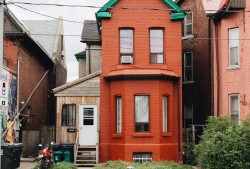Unlocking the Architectural Lexicon: Exploring the English Vocabulary of Structures
- 房百科
- 2025-01-05
- 60
In today's globalized world, understanding and communicating about architectural wonders transcends geographical boundaries. The language of architecture, a blend of creativity and precision, is an essential tool for architects, engineers, builders, and enthusiasts alike. In this comprehensive article, we will delve into the rich English vocabulary that forms the backbone of architectural discourse, examining its nuances, history, and the significance of each term. Let's embark on a journey to decipher the intricate jargon and gain a deeper appreciation for this fascinating field.
1、Foundation and Framework
The cornerstone of any structure is the foundation, often described as a "pivotal support" or a "solid base." It's where the building rests, with terms like "bearing piles" or "pile foundations" referring to specific methods. The framework, or "skeleton," is the interconnected system of beams, columns, and walls that give a structure its form, often denoted as "load-bearing" or "non-load-bearing."
2、Facade and Ornamentation
The facade, the exterior of a building, can be as expressive as its interior. Descriptions like "ornamental façade," "clean lines," or "monolithic" offer glimpses into a building's aesthetic. Ornamentation, from intricate carvings to colorful tiles, adds character, like "frieze work" or "bas-relief sculpture."
3、Space and Function
Architectural language emphasizes the importance of space - "open floor plan," "vertically stacked spaces," or "flexible use" all describe the way a space is designed to accommodate its intended purpose. A building's function, whether residential, commercial, or cultural, is crucial, referred to as "residential architecture," "mixed-use development," or "public realm design."
4、Materials and Sustainability
Understanding the materials used in construction is vital, from traditional "stone masonry" to contemporary "green materials" such as bamboo, reclaimed wood, or recycled steel. Sustainability, the focus on environmentally responsible design, is expressed by terms like "energy-efficient," "carbon footprint," and "passive solar design."
5、Renovation and Adaptive Reuse
When it comes to restoring or altering existing structures, "adaptive reuse" or "reclaimed architecture" becomes essential. Transforming historic buildings into modern spaces requires "demolition," "preservation," or "integrated restoration strategies."
6、Notable Architectural Styles and Movements
Each era has its distinct style and philosophy, like "Gothic cathedrals" with their pointed arches and ribbed vaults, or the "Art Deco" movement with its streamlined forms and geometric patterns. Contemporary architecture, on the other hand, embraces concepts like "parametric design" and "blobitecture."
7、Building Codes and Regulations
Navigating the complexities of local codes and regulations, architects need to understand "zoning laws," "building codes," and " accessibility standards" to ensure compliance.
In conclusion, the English vocabulary of architecture is a vast and intricate web that weaves together science, art, and engineering. By familiarizing ourselves with these terms, we not only deepen our appreciation of the built environment but also expand our ability to communicate effectively within the industry. Whether you're a seasoned architect, a curious learner, or simply someone who loves the aesthetics of structures, exploring the nuances of this linguistic landscape opens doors to a world of endless possibilities in design and innovation.
To take your exploration further, visit libraries, online resources, and attend lectures or workshops that focus on architectural terminology. Engage in discussions with professionals and seek out real-life examples to connect理论与实践。 By doing so, you'll find yourself part of a global community that shares a passion for shaping the urban landscapes we inhabit. Happy learning!












